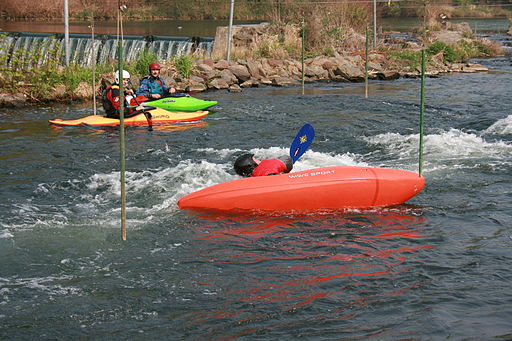Whitewater Kayaking: The Eskimo Rescue
What is the Eskimo Rescue Method in Kayaking?
The Eskimo rescue is a method for using the aid of a second kayaker going from upside-down to right-side up. Imagine yourself tipping over in a river situation: You may wet exit and swim to shore. But when another kayaker in your company is close to you, he could paddle over and position the bow of his kayak where you could grasp it. And you could reach up and use the bow of that boat to right yourself just like you did during the practice of the C-to-C motion -- pretty slick.

At this stage, you should have already learned everything you need to execute this kayaking technique except for the communication signals. Communication is crucial, because once you're upside-down underwater you can't call your fellow kayakers using the words "I could use some assistance," and you are not able to see where that assistance might come from. So we practice non-verbal signals for aid and how to "look" for assistance using your hands.
For the first few instances you practice the Eskimo rescue, have a friend stand in the water and place the bow of a second kayak within your reach.
To start this practice session, put on your noseclips, take a deep breath, tuck and roll over. Holding your body in the tuck position, reach up with your hands and slap the bottom of the boat three times —as loud as you can! This is the signal for aid.
"Look" for assistance using your hands: Holding your hands perpendicular to the boat, run them back and forth along the mid-section of your kayak. In this practice session, your friend should move the bow of the second kayak to the midsection of your boat and bump it softly against your hand. Reach up and put your hands on the deck of the second boat. Keep your head down and curve your spine in the first C position, with the boat upside down. Take a second to check your position: If you have "leaned back" and the angle of your torso in relation to your legs is greater than 90 degrees, close up that angle.
Move your body into the next C position to move the kayak right-side-up. Keep in mind that you don't push down on the second boat with your hands: Use the C-to-C motion to move the boat. Roll back into the tuck position, keeping your head down. You've just accomplished an Eskimo rescue. It's recommended to practice this exercise on both sides.



